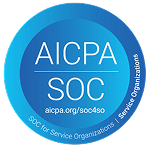The financial implications of transferring to a new university as an international student
Regardless of how much time you spent researching a U.S. school and graduate program, the curriculum you chose or university experience you imagined might not be what you expected. Some international students realize that they want to pursue a different academic program or simply don’t enjoy their school’s campus culture or location.
In these situations, you might wonder about the possibility of transferring to a new university. Before making any changes to your educational plan, here’s what you need to know about transferring schools as an F-1 student and how it can financially affect you.
Can an international student transfer to another university?
If your university experience doesn’t work out as you hoped, you have the option of transferring to another Student and Exchange Visitor Program (SEVP)-certified school as an active F-1 student.However, there are serious implications you should consider before taking any action.
You first must be accepted by your desired transfer-in school and meet its criteria for enrollment.
Once you’ve received written confirmation of your acceptance, bring it, along with the new school’s designated school official’s (DSO) contact information and the transfer-in school’s SEVIS code, to your current school’s DSO. You’ll need this information to start the electronic SEVIS record transfer process.
Does it cost money to transfer from one university to another?
Although F-1 students can transfer between SEVP-certified institutions, it can be costly. There are various expenses related to transferring to another university that add up if you’re studying abroad on a budget.
1. Transfer application fees
Just as when you applied to your first school, you’ll face fees to process your application and the official transfer. Graduate program transfer application fees differ between universities, but generally, expect to pay about US$100 or more per application.
Chances are you’ll apply to transfer to more than one school since you’re not guaranteed admission into your preferred university. In this case, the application fees alone add up to a few hundred dollars. And this doesn’t include other fees related to the application process, like transcript fees and fees to request standardized test scores.
2. Course credit transferability
If you want to change academic direction entirely by changing your concentration, any course credits you’ve already earned from your original program might not transfer toward your new program. Even if you’re sticking to the same postgraduate degree program at your transfer-in school, your existing credits might not apply at the new university.
Plus, you’ll need to retake the appropriate course at your new school, which could prolong your overall educational timeline. A longer timeline creates a domino effect in all other financial areas of your study period, from tuition to housing and more.
3. Tuition and financial aid changes
Speaking of tuition, after receiving an acceptance and enrolling in your desired transfer school, you’ll face another bill for tuition and required fees for your enrollment period. Depending on your transfer-in university, the cost of tuition and fees might be higher than at your original school since rates vary between institutions.
Additionally, transferring schools might impact your existing financial aid awards. For example, if you received a scholarship from your current school, you might lose any remaining funding once you transfer out.
4. Housing and living adjustments
Housing costs are likely the next-largest expense during a school transfer. If you currently live in on-campus housing, the school might charge an early cancellation fee to terminate the housing contract.
You’ll also need to consider the difference in the cost of living for a new city or state. For example, the cost of off-campus housing and other everyday goods will be significantly different if you’re transferring from a school that’s in a small, rural town to a university in a large metropolitan area.
If you’re transferring to a school within a competitive housing market, renting a room or apartment, and related expenses, like utilities, groceries and transportation, will likely be higher. Plus, you’ll need to budget for moving expenses, too.
What are the disadvantages of transferring universities?
Transferring universities can result in greater overall expenses, which might be challenging for students who study abroad on a budget. However, finances aren’t the only disadvantage that transferring schools can have on your study experience in the U.S.
Students who want to transfer schools but have a terminated SEVIS record have a few options to transfer schools. One choice is leaving the U.S. and returning under a new F-1 initial entry status through the new school. However, with this approach, students lose the time accrued at the original school, so it won’t count toward eligibility requirements for practical training.
Five-month rule for F-1 transfer
Transferring institutions also demands strategic timing. F-1 students must resume their education at their desired SEVP-certified transfer school within five months of transferring from their initial school. If the new-school start exceeds this time limit, a student risks losing their visa status.
Tips to financially navigate a school transfer
Transferring to a new school involves many moving pieces as a postgraduate student on a budget. Here are a few ways to overcome the financial hurdle.
- Budget ahead. To study abroad on a budget, you’ll need to compare your current school’s costs of attendance against the new school you’re considering. Ensure you’re including hidden costs, like the ones mentioned above, such as housing, moving costs and adjustments in financial aid. Knowing how much your new school and living situation will cost can help you calculate how much financial aid you may need and how much is left over for your discretionary spending.
- Verify your credits transfer. Confirm which of your existing course credits are accepted by your new school, and whether it can move the dial toward your degree requirements. Having as many credits as possible successfully transferred to your new university saves you time and money.
- Seek scholarship opportunities. Explore whether your new school offers financial assistance for postgraduate students. This might be a scholarship program or grant that can help you pay for any additional expenses incurred by transferring schools. MPOWER Financing also supports students through scholarships ranging from US$500 to US$8,000.
- Explore your financial aid options. If your new school’s cost of attendance and other expenses associated with transferring universities are more than your current funding supports, find other sources offinancial assistance for postgraduate students. MPOWER’s student loan services are tailored to your unique needs and don’t require a cosigner or collateral. Plus, MPOWER offers valuable perks, like career services and visa support.
Plan proactively before transferring schools
As an F-1 student studying in the U.S., you’re permitted to transfer schools if your current university isn’t helping you reach your academic goals. However, because this decision can have a big financial impact and requires careful timing, planning your transition as early as possible is key.

